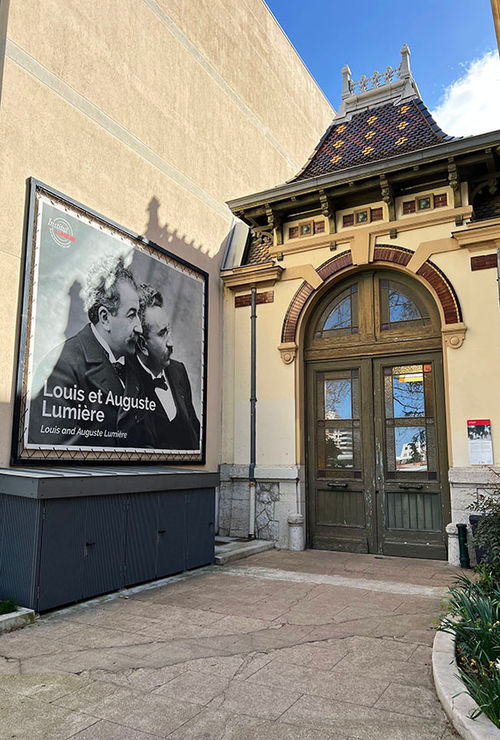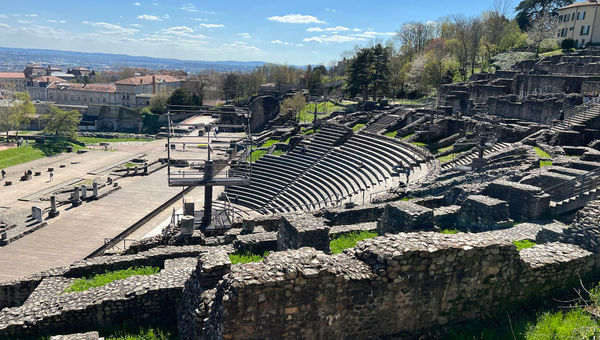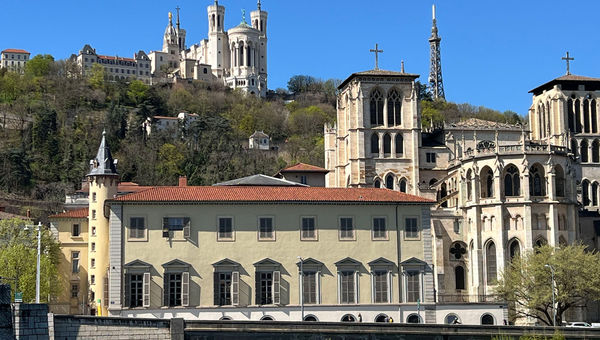The city of Lyon hosts the Lyon Street Food Festival every June, the largest culinary festival in France.
The good news for foodies like myself, though, is that you don’t need to attend that annual event to indulge in great cuisine — it’s on the menu in the city year-round.
I learned that on my visit in March, which coincided with the Rendezvous en France trade show. Atout France, the marketing arm of the French Government Tourist Office, hosts it every year in a different part of the country to give travel industry partners a chance to get to know the various regions of the country.
In the case of Lyon, the city’s reputation precedes it. Known as France’s gastronomic capital, Lyon boasts a whopping 17 Michelin-starred restaurants out of some 5,300 eateries, including the traditional bouchon Lyonnais brasseries, where authentic fare is served in cozy, unpretentious settings.
In short, bring your appetite.

Bocuse, a legendary French chef who was based in Lyon, is venerated in this food-centric city. Photo Credit: Felicity Long
I started my culinary exploration of the city at the Halles Paul Bocuse, named for the iconic chef for whom the Bocuse d’Or championship — think of it as a Super Bowl for chefs — is named.
Technically an indoor food market, the Halles is a destination in its own right, with 60 or so merchants selling everything from cheeses, oysters, baked goods and charcuterie to specialty foods and wine.
There are restaurants in the Halles, most with just a few tables — reservations are strongly encouraged — and tiny shops filled with high-end, food-related souvenirs.
Back in city center, I took advantage of it being shoulder season by dining at various spots in the city without a reservation, including snagging a sunny outdoor table at L’Institution for a long lunch.
For visitors looking to try a local bouchon — probably not the best choice for vegans, since meats and cheese feature heavily in the cuisine — there are so many that the local tourist office suggests making sure the one you choose has Les Bouchons Lyonnaise certification.

The Lumiere Museum, a little outside of the city center, is an homage to the brothers who created what is arguably the first motion picture 130 years ago. Photo Credit: Felicity Long
Step away from the table
As the capital of France’s Auvergne-Rhone-Alpes region, Lyon has so much more than great food to recommend it.
Located at the junction of the Rhone and Saone rivers, the city’s history stretches back more than two millennia, which is reflected in its art, culture and, most notably, its architecture.
Probably the best way to explore it all is with the Lyon City Card, available for 24, 48, 72 or 96 hours and valid on virtually all modes of transportation and for entry to local museums and attractions.
I used it on the funicular, which brought me to the ancient, hilltop Roman Amphitheater des Trois Gaules; on the easy-to-navigate metro, which took me from the medieval and Renaissance architecture of Old Town to the Confluence District, where the rivers meet; and on the bus for an exploration on the newly renovated Lumiere Museum.
Film buffs will recognize the Lumiere brothers as the creators of what was arguably the first film 130 years ago this year. Called “Workers Leaving the Lumiere Factory,” the 1895 film simply shows a steady stream of people walking toward the camera; but for viewers of the day, the technology was revolutionary.
For a completely different side of culture, the Museum of Confluences on the Presqu’ile, the peninsula formed by the confluence of the two rivers — eye-popping as much for its crystal-like exterior as for its exhibitions — is marking its 10th anniversary with four new exhibitions. Don’t miss the giant mammoth of Choulans, discovered in 1859 and said to date from the ice age.

The Roman amphitheater is a reminder that the city’s history goes back more than 2,000 years. Photo Credit: Felicity Long
Hit the pavement
A key attraction for visitors who like to do their sightseeing on foot is the network of traboules, covered passageways between buildings in Vieux Lyon, La Croix-Rousse hill and Presqu’ile. There are some 500 such passageways in the city, about 80 of which are open to the public from 7 a.m. to 7 p.m. despite being privately owned. You can tour some of the most picturesque with a guide or go on your own with an app, but either way, the traboules offer a unique look into the behind-the-scenes life of the city.
The city’s menu of walking tours also includes visits to the historical canut district in the La Croix-Rousse section of the city, where in the 19th century, silk workers plied their trade in workshops that supplied some of the great fashion houses of the day. The Maison des Canuts is open to visitors and offers guided tours and weaving demonstrations.

The Basilica Notre-Dame of Fourviere is accessible via funicular and dominates the city’s skyline. Photo Credit: Felicity Long
Sleeping in history
You can tour the Grand Hotel-Dieu, a former hospital that dates from the Middle Ages and managed to survive and serve the wounded in two world wars. And overnight guests will find that the InterContinental Lyon — Hotel Dieu offers more than just luxurious accommodations. The five-star property has various room and suite categories to choose from, most of which offer views of either the Rhone, the historical courtyard or the gardens.
The property features a tony Cinq Mondes spa and fitness center, the Epona restaurant and Le Dome bar, both helmed by chef Mathieu Charrois and set in ornate interiors, courtesy of one of the largest private restorations of a historically classified site in France that took from 2013 to 2019 to complete.
The property also features a location convenient to both Bellecour Square, where the tourist office is located, and Tete d’Or Park, billed as France’s largest urban park.
Getting to Lyon
Most travelers visiting Lyon will likely transit through Paris, and while connecting flights are available and fairly frequent, the TGV InOui rail service only adds about an hour to the trip and is a lot more convenient and less expensive.
The train departs Lyon from the downtown station and deposits travelers at the Gare de Lyon railway station, right in the heart of Paris.

